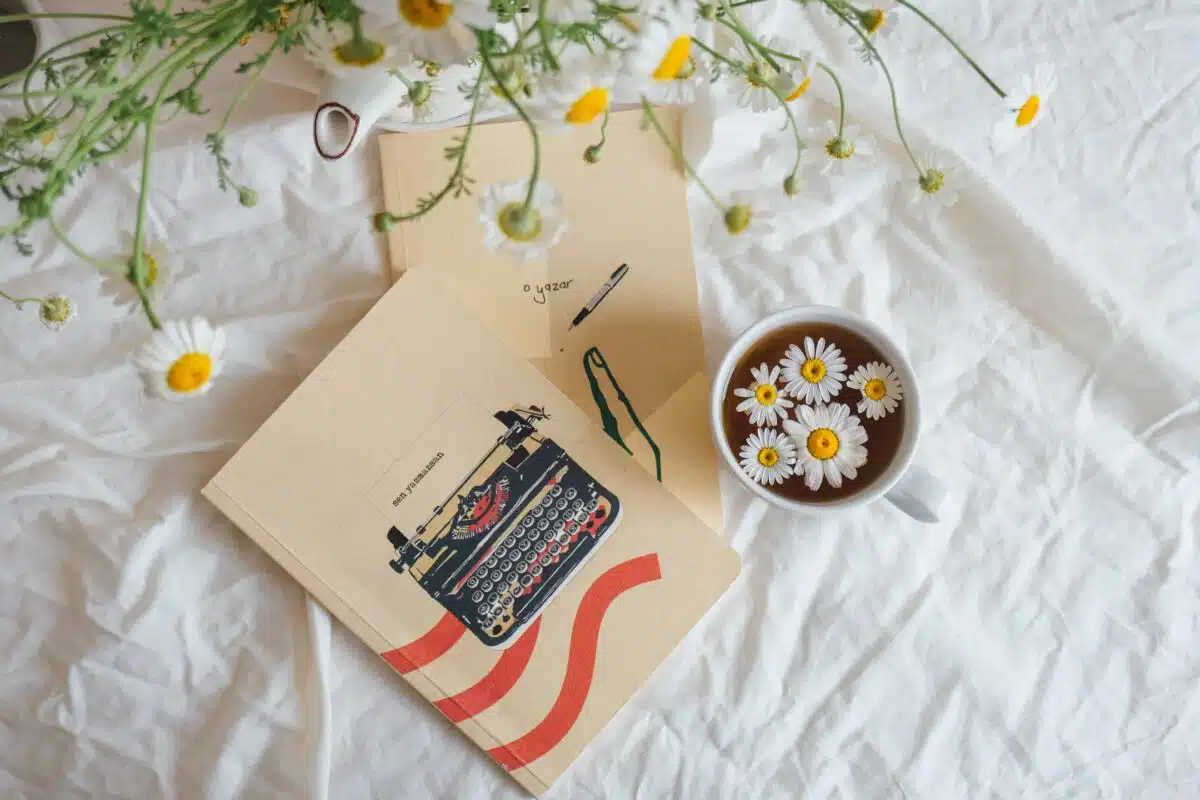Here’s what the Confessional poetry form is:
Confessional poetry, hailing from 20th century America, is a style of poetry in which the personal traumas of the writer (or other deeply personal experiences) are front and center.
The form can vary wildly, but they are ultimately an exercise in revealing one’s personal narrative through poetry.
So if you want to learn all about the Confessional poetry type, then you’ve come to the right place.
Let’s get started!
- McWhirtle Poetry Form: Find Fun from the Mundane
- Slam Poetry Form: Speak Bold Beats
- Trenta-Sei Poetry Form: Light Up Emotional Tales
- Vocabularycleft Poetry Form: Be a Jumble Genius
- Terzanelle Poetry Form: Spin Hopes in Notes
- Mistress Bradstreet Stanza Poetry Form
- Bop Poetry Form: Untie Knots of Life’s Trials

Forms of Poetry: Confessional Poetry

Confessional poetry (or more broadly “confessionalism”) is a form of poetry that focuses intently on the first person.
As the name would imply, confessional poetry is deeply personal, and often deals with difficult subjects that might normally be difficult to reveal or talk about.
It engages with the concept of vulnerability on an extreme level.
As a direct result, confessional poetry can be relatively dark.
It is typically autobiographical in nature, drawing on the writer’s most personal experiences.
These may include matters of mental illness, personal weakness, sexual awakening, and especially instances in which the subject matter may have been taboo, either at that point in the writer’s life or even in the time in which the poem is written.
It is not uncommon for a confessional poem to portray the very specific personal traumas that an individual has experienced.
It’s a difficult style of poem to write, not because of its structural complexity but because of the sheer mental toll that it demands of the writer in revealing their innermost thoughts publicly.
A popular theory is that confessional poetry may have emerged as a direct result of the horrors of the twentieth century, in particular the events of the World Wars.
Writers may have been looking for outlets to release unspent emotions, and confessional poems were a natural outcome.
M. L. Rosenthal is sometimes credited as having coined the use of “confessional” in relation to these poems, in an effort to describe Robert Lowell’s Life Studies.
Regardless of who may have used the term first, it stuck and ultimately became a sort of subgenre within poetry.
Basic Properties of Confessional Poems

| Rhyme Structure | Varies |
| Meter | Varies |
| Origin | 20th century United States |
| Popularity | Varies from poem to poem; some are applauded as among the best poems of their respective forms |
| Theme | Deeply personal; often related to personal trauma |
Characteristics of Confessional Poetry

One interesting note regarding confessional poetry is that it never developed into a singular concrete state of being (form), or at least it hasn’t reached that point yet.
Instead, it’s a disambiguated term that acts more as a declaration of genre, like how a horror story doesn’t necessarily have a specific narrative structure but will recognizably be “horror” to a seasoned reader.
This does not mean there are no conventions associated with the style of writing, however.
In fact, the lack of a single form is meaningful in and of itself.
You see, confessional poems have been keen on taking on a conversational tone, using natural speech rhythms and easily parsed syntax.
The attraction to the form is not because of some specific archaic meter, but rather because of the content itself.
They are almost invariably free verse, and frequently unrhymed.
They do not need to be unrhymed free verse, however.
John Berryman’s “Sonnet 13” has been called a confessional poem, but it is undeniably a proper sonnet.
Similarly, any rhyme scheme or meter may be applied, depending on the writer’s preferences.
They are sometimes considered a branch of Postmodern poetry.
Postmodernism is a movement dealing chiefly with a rejection of binary systems, a more holistic perspective of things, and a certain irreverence toward the accepted norms.
The concept of moral relativism, in particular, is important to Postmodernism.
Relegating these poems strictly to Postmodernism is disingenuous, however.
They are not so much keystrokes in one big organized movement so much as they are independent thoughts.

It’s not uncommon for a confessional poem to come off as fragmentary or sparse, with a sort of trailing off to it.
Of course, because there is no one standard, almost everything is fair game.
The key element that makes a poem ‘confessional’ is its theming.
The deeply personal nature of the poem.
The idea that it could have only been written by the person who wrote it, and that it represents an important piece of them.
Specifically, the pain and suffering that the writer has been through is typically the focal point.
Critics of confessional poetry have said that the poems “complain too much” or that they “beg for attention” but these are, of course, the same criticisms that we’ll often hear maladjusted adults turn to when they weren’t trained to be emotionally available from an early age.
You can tell a lot about a person by how they read a confessional poem.
One near-universal constant is that confessional poems will almost always be in first person.
They are, after all, an individual account of real-life experiences.
It can be argued that no other perspective would make sense, at least logistically.
Examples of Confessional Poetry

from The Operation by Anne Sexton
After the sweet promise,
the summer’s mild retreat
from mother’s cancer, the winter months of her death,
I come to this white office, its sterile sheet,
its hard tablet, its stirrups, to hold my breath
while I, who must, allow the glove its oily rape,
to hear the almost mighty doctor over me equate
my ills with hers
and decide to operate.
Above is an excerpt from Sexton’s “The Operation,” a poem detailing the thoughts rushing through her mind just before a critical operation.
In the poem, she gives us a glimpse of what it was like for her to go through a major operation.
The poem is rife with delicate and evocative images of the people in the scene, including refreshingly blunt descriptions of her own movements and discomforts.
There is little to no censure between the poet and the reader, instead opting to be as transparent in its attempt to capture the poet’s feelings and experiences as possible.
Whether you love or hate confessional poetry, one obvious benefit of these poems is that you really, truly get to see life from another point of view.
A skilled poet can make something you’ve never been through feel as if it just happened yesterday.
While some writers have lobbied criticism against how bold confessional poems can be in their depictions, I think there is quite a great deal of merit to be had in just how honest they are about the human condition.

from One Art by Elizabeth Bishop
I lost my mother’s watch. And look! my last, or
next-to-last, of three loved houses went.
The art of losing isn’t hard to master.
I lost two cities, lovely ones. And, vaster,
some realms I owned, two rivers, a continent.
I miss them, but it wasn’t a disaster.
—Even losing you (the joking voice, a gesture
I love) I shan’t have lied. It’s evident
the art of losing’s not too hard to master
though it may look like (Write it!) like disaster.
This second excerpt is the second half of Elizabeth Bishop’s expertly written “One Art.”
The poem touches on the concept of loss.
More specifically, it asserts that losing something is not unusual nor disastrous, but simply a part of life.
The latter half of the poem, depicted above, is particularly poignant in how it balances claiming that loss is an unavoidable part of life while also hinting at some of the speaker’s own regrets.
The insistence of “Write it!” in the final line shouldn’t go unnoticed, as this is the moment that makes the reader question if perhaps the speaker is actually trying to reassure themselves that loss only looks like disaster.
In fact, it could be argued that the final verse is the heart and soul of this poem.
This is the moment that we realize the poem is not addressed to us, the reader, but to some specific person lost to the speaker.
This example was also chosen to showcase how confessional poems can choose to take on a form, despite not necessarily being obligated to.
Bishop’s ability to make a villanelle sound almost like natural speech is evident here and is on full display.
It should be noted that the villanelle is legendary for its difficulty, so there’s no overselling how impressive this poem actually is on a technical level.
Tips for Writing a Confessional Poem

A confessional poem is an exercise in sincerity and vulnerability.
The rhyme scheme and meter should ideally be comfortable to you.
As comfortable as breathing.
A veteran poet with dozens of sonnets under his belt might be able to write a confessional in sonnet form and have it be meaningful, but a novice should absolutely not try to juggle both.
The confessional lives and breathes on transparency.
Avoid euphemisms unless they’re a natural part of how you speak and think.
Be blunt.
Be dirty.
If your feelings at the time would’ve been impossible to say aloud because they were forbidden feelings, deprived of a sense of morality and social awareness, then say them anyway.
Your confessional may come off as offensive or crass, depending on what experience you’re trying to portray.
Don’t be afraid of that.
You may come off as weak or cowardly if you picture your actions and the words at the time too honestly.
It might make you look like a bad friend or a bad lover or a bad employee.
Do not be afraid.
The best confessionals are those that are fearless and distinctively personal.

Feelings that could have only been yours, coupled with experiences that could have only come from you.
Traumas that are impossible for the reader to understand without context are fair game.
In fact, go into excruciating detail about that context.
A confessional poem need not be comforting or friendly or have a happy ending.
It’s allowed to be the unwashed truth of a situation.
Accept that there is some beauty entrenched in the ugliness of everyday life and in the flaws of individuals.
There is a reason that confessionals tend to favor narrative imagery over metaphor, though you’re free to make your own decisions as to how you’ll structure the poem.
Narratives are vivid, clear, and unmistakable.
There is no question of, “What do you think such-and-such represented?”
Instead there is a flat horizon laid out before the reader with only true events sitting on it, like the feed from a camera.
This startling clarity is perhaps the truest way to make your confessional pop.
Some readers will compliment your bravery.
Others will complain that you’re oversharing.
It doesn’t matter.
A confessional poem is something you ultimately write for you.
Poet’s Note

As a final aside, confessionals aren’t always fun to read.
They are fun to write, though, sort of.
Maybe relieving is a better word?
I do advise taking them on as a thought exercise from time to time, particularly if you’re suffocating beneath the weight of everyday stress.
Comprehensive Collection of Poetry Forms: Craft Words Into Art

Dare to traverse the entire spectrum of poetic forms, from the commonplace to the extraordinary?
Venture from the quintessential Sonnet to the elusive Mistress Bradstreet stanza, right through to the daunting complexity of Cro Cumaisc Etir Casbairdni Ocus Lethrannaigecht.
For those with a zeal to encounter the full breadth of poetry’s forms, this invitation is yours.
Start exploring the vast universe of poetic ingenuity with our comprehensive array of poetry forms right now!
- McWhirtle Poetry Form: Find Fun from the Mundane
- Slam Poetry Form: Speak Bold Beats
- Trenta-Sei Poetry Form: Light Up Emotional Tales
- Vocabularycleft Poetry Form: Be a Jumble Genius
- Terzanelle Poetry Form: Spin Hopes in Notes
- Mistress Bradstreet Stanza Poetry Form
- Bop Poetry Form: Untie Knots of Life’s Trials
